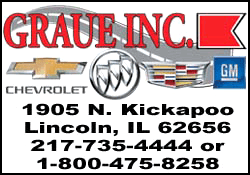|
 The finding underscores a transatlantic gulf between the price of
treatments for a range of diseases and follows demands for lower
drug costs in America from industry critics such as Democratic
presidential candidate Hillary Clinton. The finding underscores a transatlantic gulf between the price of
treatments for a range of diseases and follows demands for lower
drug costs in America from industry critics such as Democratic
presidential candidate Hillary Clinton.
The 20 medicines, which together accounted for 15 percent of global
pharmaceuticals spending in 2014, are a major source of profits for
companies including AbbVie, AstraZeneca, Merck, Pfizer and
Roche .
Researchers from Britain's University of Liverpool also found U.S.
prices were consistently higher than in other European markets.
Elsewhere, U.S. prices were six times higher than in Brazil and 16
times higher than the average in the lowest-price country, which was
usually India.
The United States, which leaves pricing to market competition, has
higher drug prices than other countries where governments directly
or indirectly control medicine costs.

That makes it by far the most profitable market for pharmaceutical
companies, leading to complaints that Americans are effectively
subsidizing health systems elsewhere.
Manufacturers say decent returns are needed to reward high-risk
research and prices reflect the economic value provided by
medicines. They also point to higher U.S. survival rates for
diseases such as cancer and the availability of industry-backed
access schemes for poorer citizens.
In recent years, the price differential has been exacerbated by
above-inflation annual increases in U.S. drug prices at a time when
governments in Europe have capped costs or even pushed prices down.
In fact, U.S. prices for top brand-name drugs jumped 127 percent
between 2008 and 2014, compared with an 11 percent rise in a basket
of common household goods, according to Express Scripts <ESRX.O>,
the largest U.S. manager of drug plans.
In Europe, meanwhile, the impact of austerity on health budgets
since the financial crisis has led industry executives to complain
of single-digit percentage annual price declines.
PRICE DISCOUNTS
The U.S. Pharmaceutical Research and Manufacturers of America (PhRMA)
says international comparisons are misleading because list prices do
not take into account discounts available as a result of "aggressive
negotiation" by U.S. insurers.
These discounts can drive down the actual price paid by U.S.
insurance companies substantially. However, similar confidential
discounts are also offered to big European buyers such as Britain's
National Health Service.
[to top of second column] |

“The U.S. has a competitive marketplace that works to control costs
while encouraging the development of new treatments and cures,"
Holly Campbell, PhRMA's director of communications, said in a
statement.
PhRMA also argues that while Americans may pay more for drugs when
they first come out, they pay less as drugs get older, since nearly
90 percent of all medicines prescribed to U.S. patients are now
cheap generics.
In Britain, generics account for just over three-quarters of
prescriptions and that level is lower in other parts of Europe.
Still, the United States is slower to see the arrival of generic
competition to some top-selling drugs, which explains some of the
differences in pricing for certain medicines on the top-20 list.
Overall, the analysis found that price differentials were slightly
smaller for complex antibody-based drugs, which are used to treat
conditions like cancer and rheumatoid arthritis.
Many of the biggest differences were evident for older drugs,
reflecting the fact that prices are typically hiked each year in the
United States, said University of Liverpool drug pricing expert
Andrew Hill.
"It shows the U.S. drug pricing situation isn't just a matter of
isolated cases like Turing Pharmaceuticals," he said.
The latest furor over U.S. drug costs was prompted by the decision
by unlisted Turing to hike the cost of an old drug against a
parasitic infection to $750 a pill from $13.50. It has since
promised to roll back the increase.

The same medicine is sold in Britain by GlaxoSmithKline for 43 pence
(66 cents).
(Transatlantic drug price divide graphic http://link.reuters.com/jac85w)
(Editing by Giles Elgood)
[© 2015 Thomson Reuters. All rights
reserved.] Copyright 2015 Reuters. All rights reserved. This material may not be published,
broadcast, rewritten or redistributed. |